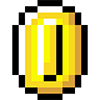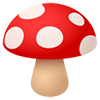-
Posts
4,793 -
Joined
-
Last visited
-
Days Won
36
Content Type
Profiles
Forums
Articles
Downloads
Gallery
Blogs
Everything posted by JoeViking245
-
Again, I don't use/have that emulator setup. So flying blind here. Remember, you're passing along whatever details to your batch file. So, whatever your batch file requires to be sent to it. And since you're running 'my' batch file, no boxes should be checked. Including boxes in the Associated Platforms section (except for Set As Default Emulator for the platform). I presume when you imported the games, you imported the .cue files. Correct? Try creating a batch file and run it by itself, outside of LaunchBox to start a game. You indicated you did that and it worked, but you didn't show what that one looked like. Should be something like set __COMPAT_LAYER=highdpiaware start "" Fusion.exe -scd "D:\myGames\Sega cd\my favorite game.cue" pause Change the above path to reflect the game that you were testing in LaunchBox, its ROM path. Now see if that works. I added a pause at the end (for testing purposes) so if any errors come about, you should be able to see them.
-
This won't load a game. Just the emulator (because it wasn't told what game to load). That's where %1 comes into play. to use an emulator, try: set __COMPAT_LAYER=highdpiaware start "" Fusion.exe -scd %1 You might need to put quotes around it set __COMPAT_LAYER=highdpiaware start "" Fusion.exe -scd "%1" Or you might need to declare it 1st set game=%1 set __COMPAT_LAYER=highdpiaware start "" Fusion.exe -scd %game% And possibly add quotes set game=%1 set __COMPAT_LAYER=highdpiaware start "" Fusion.exe -scd "%game%"
-
Inside of the .zip's that are not working, is there just the single game2.a26 file? (vs. more than one file) If you edit your RetroArch emulator (in LaunchBox), under Associated Platforms - Atari 2600 [platform], is the box Extract ROMs checked? Since the Stella core can handle .zip files directly, try unchecking that. (If it's already unchecked, try checking it??)
-
What's the difference between the ROM file types that work vs. not work? e.g. game1.zip vs. game2.a26
-
.thumb.png.c9faf450e4d2b690a819048b18173f61.png)
How can I stop the damm stupid notificaction
JoeViking245 replied to TrevorZ's topic in Troubleshooting
It's not very often the integrated plugins actually need updating. In the message/notification is a link to the plugins section [of the UI]. In that section, select the plugin in question and click the Update button. It will take 1, maybe up to 3 full seconds. When done, it well tell you LaunchBox needs to restart. Once restarted, you will not see the damn stupid notification. Many people do, whether they realize it not. Not saying you do use it, unknowingly. This method of updating them allows rare, yet minor fixes to be pushed without the need for a complete new release of LaunchBox being pushed. e.g. A fix can be realized within a matter of hours, rather than waiting until the next release. Thank you for your patience and understanding. -
I was referring to when you set the batch file as an emulator, LB will pass the games ROM path [as a variable] to it. And in the batch file it (the ROM path) becomes the variable %1.
-
Can you show what your batch file looks like? Also, how are you running it from LaunchBox? As the game (e.g. it's the games application path)? Or did you set it up as an emulator? Can you share screenshot of this?
-
Ahem...the OP was for minimum requirements. lol To be fair though, they did also ask for 'your setup'.
-
OK. So it was a bad guess. 😊 If you have CTC, you could download the CTC files, load it up and snoop around there. They looked to be available on the actual theme's download page. Which TBH, is probably where this thread should have been. Granted, the author hasn't been around since March, there may be others that follow that main thread and possibly have some insight.
-
Pretty positive there isn't via LB API. I've used Process.GetProcesses(). Then whittle down to the emulator. Works well in my application. Looks like you've already found "the solution" to this. Well done. If your games have consistent file naming conventions, you could super crazy/creative... Using your OnBeforeGameLaunching() override method and the available IGame game, you can: if (game.GetAllAdditionalApplications().Length > 0) foreach (var g in game.GetAllAdditionalApplications()), if g.ApplicationPath.EndsWith("Disk 2.img") (You've found Disk 2) Now use game.ApplicationPath and g.ApplicationPath in your override. (Then restore things OnGameExited()) Alternately, Create "an emulator". Use C# or even AutoHotkey. Pass %romfile% to the "emulator". Do a file = Path.GetFileName. Search the ROM files' path for a file that starts with file.Split(" Disk")[0] and ends with "Disk 2.img". If it exists..... and build your command line from there. Then it's just a matter of Process.Start() blah blah blah WaitForExit() ... return "done". this.Close(). (or in AHK... RunWait, emu.exe...parameters...) That should keep the startup/shutdown screens working, as well as work for any multi disk games. Personally, I'd just stick with the individual games' command-line override. Always glad to help.
-
Looking through the Views files and taking a super wild guess, try placing an image for a game in the /Images/[your_platform]/Screenshot - Game Title/ folder. And see if it shows up when selecting that game.
-
Did you set the batch file as an emulator with no command line parameters and in the batch, capturing %1 to pass as the game/ROM? If it works outside of LB, it'll work in LB. I don't have the abandoned Kega Fusion emulator setup on my machine, but if the different platforms it emulates requires different parameters, you'll want to capture %1, %2 (and/or more?) as well.
-
[For all readers...] This has been reported and is a known issue that is under investigation. Read more about it here: Feedback - LaunchBox: Date formatting crash with Arabic regional settings on Windows 11
-
At this point, the game/emulator/etc. to be used are already committed. So can't really change any of that. As for canceling it, I suppose you could OnAfterGameLaunched(), capture the emulators HWND (or similar) and force close the window. Then use the PlayGame() method to launch the game using whatever args you like. Is this something that changes between different launches of the particular game? Or is this something that could be added to the specific games' Emulation section and using override command line parameters.
-
Would deleting those platforms and reimporting the games be out of the question? Doing so won't remove the images (unless asked... select, don't delete the images) which are generally associated to the games via their platform/game_title. Thus will get reassociated and not need to be redownloaded after reimporting. The reimport process should be fairly painless and relatively quick. This will also get the games associated to the proper LaunchBox DB ID.
-
.thumb.png.c9faf450e4d2b690a819048b18173f61.png)
Launchbox Free - Video Snaps Not Working After Update
JoeViking245 replied to Brett_00's topic in Troubleshooting
If it's a video, you'll see the "Play" triangle. (Grasping at straws...) if it's not displaying them, check Tools < Options < Visuals < Game Details - Show Videos -
.thumb.png.c9faf450e4d2b690a819048b18173f61.png)
Launchbox Free - Video Snaps Not Working After Update
JoeViking245 replied to Brett_00's topic in Troubleshooting
Since you've been around a while, I presume your license is a premium lifetime license. Do the videos show, and just not play? As in if you click it, it'll start playing. If so, maybe just a matter of: View < Media < Auto-Play Videos (or Ctrl+Alt+V) For LaunchBox at least. -
That's definitely a different error. I suggest submitting a bug report (top of this page, click Help & Support, select Report a Bug). This way it will "officially" get reported and a better chance of getting looked at. Be sure to include your details and the actual error (you show above). Actually, as I think about it, you should be able to instead, just click the Report Error button on the error itself. (Never done that myself, but I presume it goes to [or at least ends up in] the same "official" location.)
-
Not sure what's going on then. You might start (continue?) researching that app (Google, their forums/wiki, etc.) to see if there's a way to auto-start it without having to "click the button". Something like a command line parameter. Or if there's an option to load it when Windows starts, test that to see if it loads without having to click anything. If so, look at the shortcut they created in your Startup folder to see how they did it, and duplicate that. (then remove the shortcut) And if nothing else, you've learned a couple new AHK script testing/troubleshooting techniques.
-
.thumb.png.c9faf450e4d2b690a819048b18173f61.png)
Marquee display lost after rotating monitor
JoeViking245 replied to marwatk's topic in Troubleshooting
1st off, COOL CAB!!! May sound weird, but what happens if you slide the marquee (2) to the left side of the main monitor (1) [keeping the tops still aligned]? (Display Settings) -
What's the error? Is it a TP error? A script error? Some other error? If it's a TP error, I can't help you. Not that I won't. It's that I can't. I don't use TeknoParrot. Well, you're halfway there. You're welcome.
-
If after the full 5 seconds has lapsed, and no circles appear, does anything happen if you [manually] hit Ctrl on your keyboard? If so, is it (the circles) in the correct location (above the button)?
-
You created a text file which had the one line: Run, E:\Launchbox\nomousy.exe /hide in it. You saved that file and changed the file extension from .txt to .ahk. e.g. You saved and renamed it to: E:\My AutoHotkey Scripts\HideMouse.ahk Your Command-line Parameters for this Additional App will then be "E:\My AutoHotkey Scripts\HideMouse.ahk" (the full path to the file you previously created, all within quotes)
-
If it works outside, I'd check that the Additional App is setup correctly. Give it a name Point to LaunchBoxs' AutoHotkey.exe WITH QUOTES, add the "full/path/to/your/script.ahk" Check Run Before Click OK to save and close
-
This will hide it, then (I presume) show it, right away. I "presume" because I didn't see in the documentation where is says to add "/show" as a parameter to show it again. [Just] this should work. If your Additional App has both Run commands, it won't work. After deleting the Additional App, did you click the OK button (vs. clicking the X in the upper right corner)? Are you testing nomousy and starting the game? Maybe try that. Run, E:\Launchbox\nomousy.exe /hide RunWait, E:\LaunchBox\Emulators\Demul\demul.exe -run=naomi -rom=hotd2 MsgBox The game has exited Run, E:\Launchbox\nomousy.exe (change the path to Demul as necessary)

.thumb.png.c9faf450e4d2b690a819048b18173f61.png)



